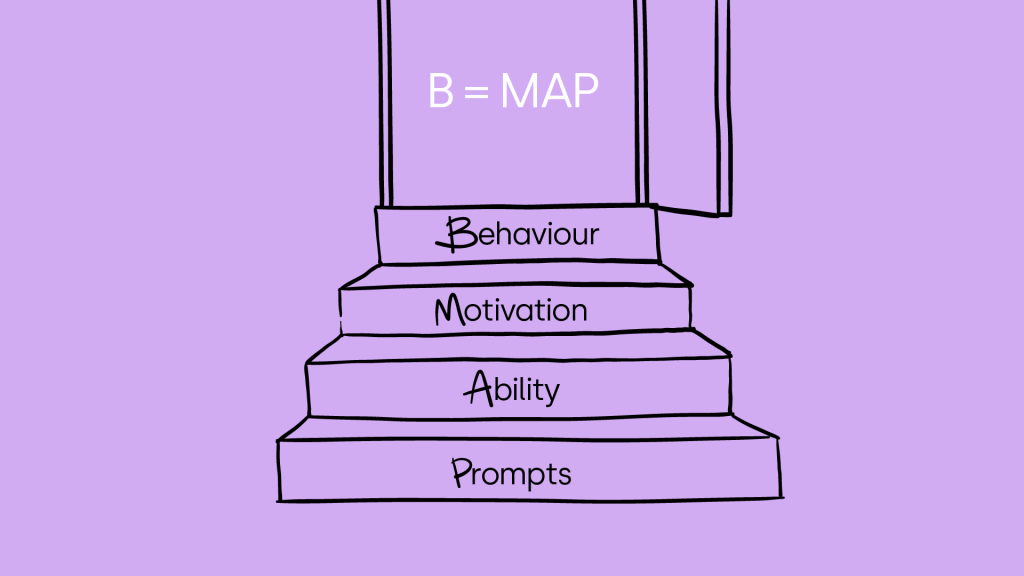Wise Up
A MAP to Investing: Learnings from Tiny Habits by BJ Fogg
When it comes to investing, there is nothing as important as learning.
Sometimes what you learn is straightforward and simple – and this will surely result in you being a good investor.
But, if you want to be a great investor, you have to absorb knowledge from various sources – and when it’s solid information, you use it to help yourself attain the right mindset for investing.
We found Tiny Habits by BJ Fogg to be one such source of knowledge. BJ Fogg is a writer and behavior scientist. His career in innovation and teaching spans over two decades, and his book Tiny Habits brings focus to the power of using simple, consistent habits to create long-lasting results. The author has a theory that there are really only 3 things that are likely to cause a lasting change in your behavior –
- Having an epiphany.
- Changing your surroundings.
- Take tiny steps. Build tiny habits.
Now, #1 is rare. Epiphanies aren’t easy to stumble upon! It’s like finding a needle in a haystack. Also – you have no control over when a bulb is going to go on in your head. #2 – is doable, but not always feasible. #3, however, is the only thing that you have complete control over – and it’s feasible because it only requires consistency of effort toward small, manageable steps.

The Fogg Behavior Model
Now, you must be wondering – “But why do tiny habits work?”
Fogg shares a model to illustrate why small, daily, and diligent habits work wonders when trying to make something a part of your routine.
Fogg states that –
B = MAP
INSERT IMAGE HERE
Here, B is Behaviour, and M (Motivation), A (Ability), and P (Prompts) are the three elements that are absolutely necessary to make Behaviour occur, i.e., trigger Behavioral change.
Elements of the Fogg Behavior Model
Let’s take a closer look at the 3 elements of this model –
- Motivation – A lot of people say they lack motivation, but the author proposes that motivation is in fact only one of the elements of behavioral change. Motivation can be divisive – for instance, when you want to go meet your friends for dinner after work, but you also want to get home, take a hot shower, and relax by yourself! Motivation can also be volatile and it can be hard to stay 100% motivated, 100% of the time. The bottom line – you have no real control over it.
- Ability – Ability is a bit more in your control. It is a complementary element to motivation – for instance, sometimes you might lack the motivation to go to the gym, but you know you’ll manage just fine with a home workout! The ability to do something can often compensate for the lack of motivation to do it. Fogg reckons that breaking down tasks into small steps increases your ability to take those steps regularly, rather than getting demotivated because you’re not seeing progress. You can rely on your ability if you’re willing to give it time to thrive. Make habits sustainable for the long run, and you won’t experience burnout!
- Prompt – There are three key prompts that can trigger a behavioral change (we’re going to come full circle here, folks!). This includes –
- Person (Epiphany) – This is when something inside you triggers a response out of you. When you’re hungry – you eat. When you’re tired – you sleep. This isn’t exactly a reliable prompt to change behavior in the long term. It is but a small part of your overall behavior.
- Context (Surroundings) – This is when something happens and it pushes you to take some action. For instance, you might notice you’re running out of eggs, and buy more eggs. But, context is unpredictable, and might even be inconvenient to change. It can only momentarily cause a behavioral change.
- Action (Tiny Habits) – This is when an action you are routinely taking has a domino effect and allows you to easily perform another subsequent action as well. For instance, brushing your teeth every day might lead to flossing every day too. Action prompts fit habits into your routine, as it is. These can bring about long-lasting change.
The Fogg Behavior Model perfectly illustrates the various elements of habit-building (read: changing a behavior) and shows just how much we need to worry about each element.
There is a lot that young investors can learn in this book, but if we were to condense it into one key point – it would be to apply this rule of consistency through simple habits to investing as well. Set a goal, and work backward from there. Financial milestones don’t have to come with the burden of already having large volumes of funds in place. Break it down into spare change, invest it today rather than tomorrow, and give it time to grow. (Pro Tip: Time is the key to unlocking the full power of tiny habits!)
With all that information – we’ve barely scratched the surface of this incredible book! It’s easy to read and offers example-centric details on how tiny habits can be cultivated. If you get a chance – pick up a copy! If you don’t have time – pick up a copy anyway, and start reading for just 10 minutes a day!

